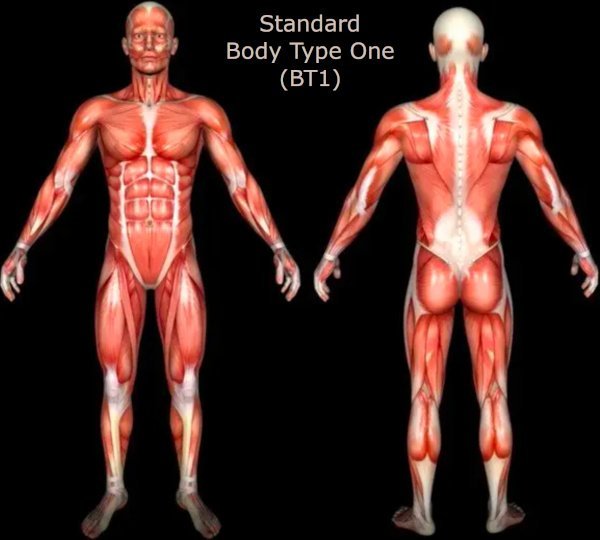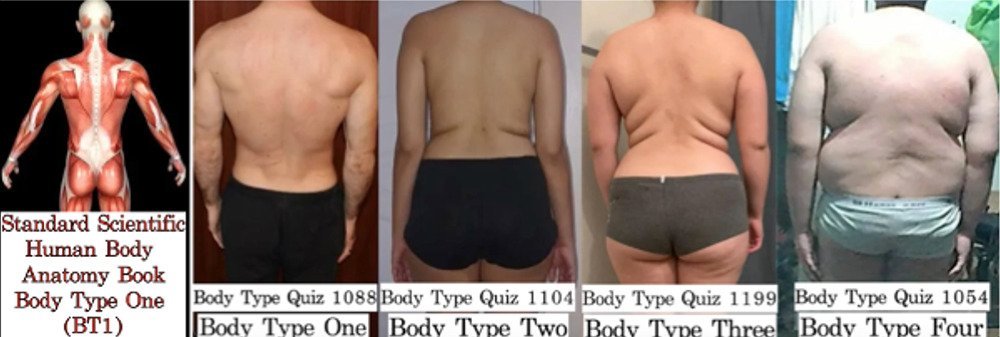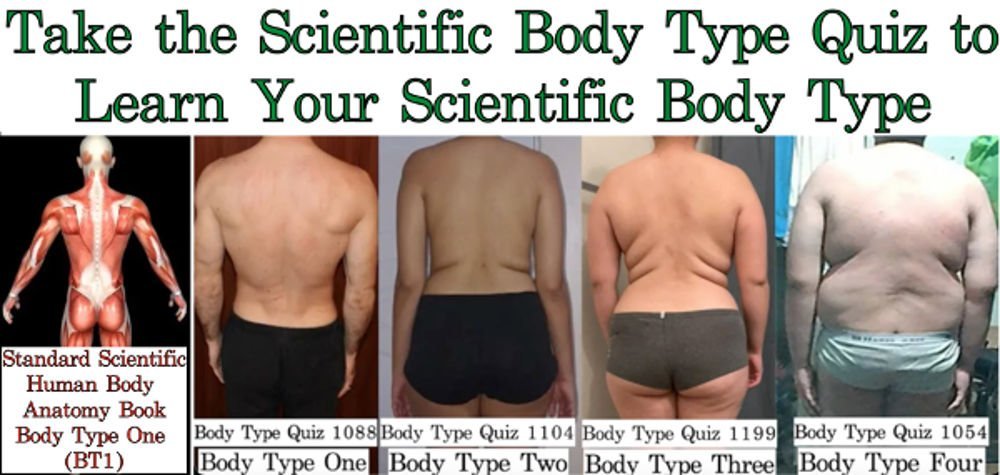
Most people do not understand the real history of body types. Contrary to most people’s adamant belief, the somatotypes three body types – mesomorph, ectomorph, and endomorph – are not based on real science. They have no definable scientific variables and thus no scientific definition. They were thoroughly discredited long ago in the 1950s. Yet, because no scientific body types existed until 2003, the vast majority of people in the world still, to this day, reference and use those unscientific somatotypes as if they are real and based on science. They are not; they are arbitrary, subjective, baseless, nonsense, unscientific shapes.
The hormone body types are no different, they are not based on real science and have no definable scientific variables. Although it is true that hormones can affect weight gain and loss and thus body shape, there are countless people in the world who have never been diagnosed with a hormone imbalance by their doctor yet they have never looked like the Standard Body Type One (BT1). The same is true for the Kibbe, 10, triangle, apple, and pear body types, etc, they are all arbitrary, subjective, baseless, nonsense, unscientific shapes. It is impossible to scientifically determine and identify your actual scientific body type using any of those fake body types because none of them have definable scientific variables.
Current Mainstream Science and Medical Doctor’s Scientific Body Type Standards – The History of Body Types
Go to your doctor and ask them which of any of those body types you are, and they will tell you none because those body types are not scientifically/medically real. Currently, there is only one scientifically and medically recognized and accepted human body type, The Standard Scientific Human Body Anatomy Book Body Type (BT1) — AKA the Standard Body Type One (BT1) found in any scientifically approve human body anatomy book, as follows:
The Standard Body Type One (BT1)
The Standard Body Type One (BT1) goes hand-in-hand with the other two scientific standards, the Body Mass Index (BMI) and the basal metabolic rate (BMR). All three of those current scientific body type standards — the BT1, BMI, and BMR — are inaccurate because none of them take into account skinny fat (cellulite, thin fat, loose skin, saggy skin, crepey skin, normal weight obesity) or excess muscle mass, no less. Body Type Science is doing the scientific research to make those three inaccurate genetic scientific body type standards more accurate.
How Many of You Have Had this Conversation with Your Doctor?
You: “Upon researching the history of body types, I am wondering what my body type is?”
 Doctor: “You are a Standard Body Type One (BT1), the ONLY scientific body type standard found in any scientifically approved human body anatomy book.”
Doctor: “You are a Standard Body Type One (BT1), the ONLY scientific body type standard found in any scientifically approved human body anatomy book.”
You: “But my body does not look like that BT1 and never has, why?”
Doctor: “Every human being is the Standard BT1. The only reason you are not a BT1 is because you are eating too many calories per day above BMR (basal metabolic rate) which is taking you outside your safe BMI (Body Mass Index). Stop eating too many calories, lose the excess fat weight, and you will once again be a BT1.”
You: “I have already done that, gotten down to my safe BMI, but I did not and do not look like the BT1. Instead, I have skinny fat on my body where I should have muscle/mass. Why?”
Doctor: (who is bound by the current three scientific body type standards – the BT1, BMI, and BMR – and has no other recourse or explanation as to why you have skinny fat in place of muscle/mass) “You must be cheating somehow, it is your fault.”
End of discussion.
You are left reeling thinking it is your fault you are not a Standard BT1 (when it is likely your genetics, no less) while feeling bad about yourself with no solution or understanding as to why your body does not look like and is not the BT1 (which is one reason why the body positive/body positivity movement began). You head back out into the unfair world to be fat-shamed, hated, trolled, and bullied by your ignorant peers and society. Understanding the history of body types can help remedy things.
The History of Body Types – Genetic Scientific Body Types
In 2003, Body Type Science was developed, defining the first-ever genetic scientific body types. The Four Body Types are defined by multiple scientific variables including vertebrae and muscle genetic development (or lack thereof) relative to the six types of skinny fat as well as fat/regular fat/excess fat, no less. All of which directly affect body shape, metabolism, athleticism, and health, to name a few.
It is interesting to note that it is a fact that it is reasonably possible to get rid of excess muscle mass (especially non-genetic) and excess regular fat mass. However, there is currently no FDA-approved way to get rid of any form of skinny fat, including cellulite. It is only possible to reduce it.
The Four Body Types (Genetic Scientific Body Type)
Human Vertebrae (26): 7 Cervical, 12 Thoracic, 5 Lumbar, 1 Sacrum, 1 Coccyx
- Body Type One (BT1) – 0 Vertebrae Underdeveloped Relative to 600 Muscles and Minimal to No Skinny Fat (All 26 Vertebrae Developed)
- Body Type Two (BT2) – 1-8 Vertebrae Underdeveloped Relative to Muscles and Some Skinny Fat (Between 25 and 18 Vertebrae Developed)
- Body Type Three (BT3) – 9-17 Vertebrae Underdeveloped Relative to Muscles and More Skinny Fat (Between 17 and 09 Vertebrae Developed)
- Body Type Four (BT4) – 18-26 Vertebrae Underdeveloped Relative to Muscles and A Lot More Skinny Fat (Between 08 to 0 Vertebrae Developed)

Diet, exercise, and lifestyle also matter when it comes to genetic scientific body type (body shape/body dysmorphia). Scientifically understanding the history of body types and why there are so many different human body shapes increases and improves understanding of human health including mitigating the current global health crisis, notably the obesity epidemic. Body Type Science is working to improve the accuracy of the current scientifically and medically accepted inaccurate body type standards, the Standard Body Type One (BT1), Body Mass Index (BMI), and basal metabolic rate (BMR).



